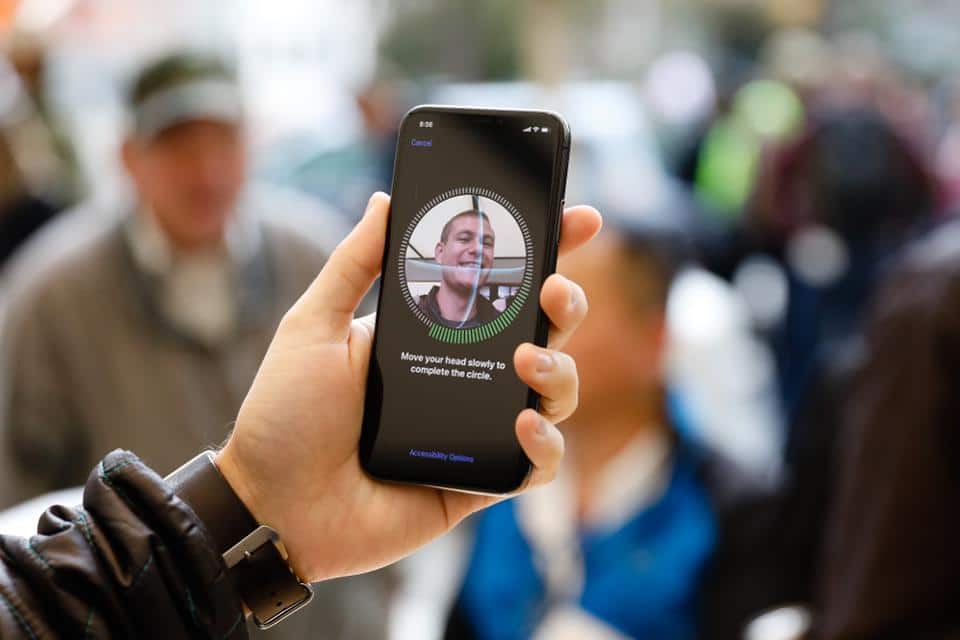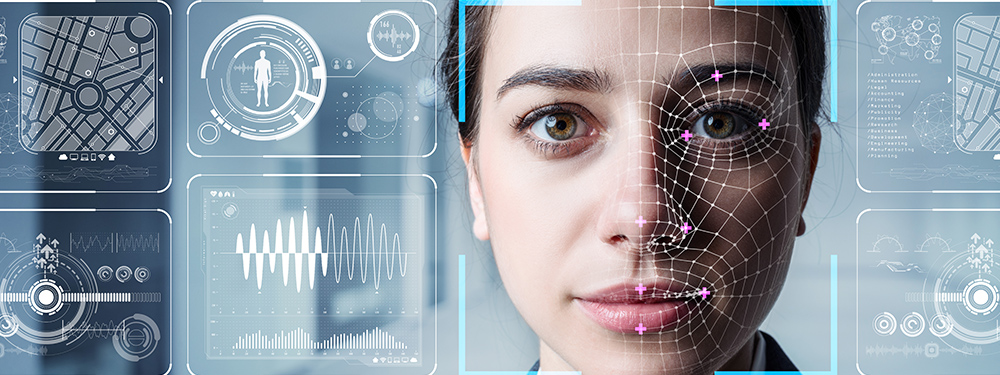When it comes to facial recognition, there is a lot of disagreement. There is a perception that facial recognition technology is untrustworthy and despised if you accept everything you hear in the media about it. This is completely incorrect.
Facial recognition has its critics, as do many modern technologies. Facial recognition software has a bad reputation because people are worried about their privacy being violated by it. Due to media misrepresentation, many people have joined the facial recognition bandwagon, worried that once their face is recognized and identified by facial recognition technology, hackers may simply sneak into a database and take their identity.
This is a blatant lie.
When it comes to verifying your identity, facial recognition and other biometric technology are among the safest options. Much more secure and less likely to be stolen than a regular password. Biometric markers, such as your face, fingerprints, and irises, can’t be lost, making them more convenient than passwords for many people.
Increasingly, businesses are turning to facial recognition technology for increased security, enhanced customer experience, and cost savings. In 2022 and beyond, the practical applications of facial recognition technology, along with the greater security that biometric authentication gives, imply that we will all become more familiar with facial recognition.
In What Ways Facial Recognition Is Reshaping Our World?

This year, we released a blog post titled Why should we care about face recognition in 2021? in which we discussed the various uses of facial recognition in 2021. The travel, retail, and public safety sectors were highlighted in the article as three of the most active users of facial recognition technology.
In 2022 and beyond, these sectors will be at the forefront of the growth of facial recognition technology. However, as we enter the New Year, we should expect facial recognition to become more prevalent in a wide range of different industries.
More countries are expected to use face recognition in healthcare contexts, such as hospitals and doctor’s offices. This will help to improve overall safety standards, eliminate identification errors, and enhance the overall customer experience.
In addition to 5G, Artificial Intelligence (AI), Edge Technologies, and the Internet of Things (IoT), Smart Cities are also helping to fuel the growth of facial recognition (IoT).
In smart cities, facial recognition is used for more than just public safety. In order to recognize things that are out of place, such as overflowing garbage bins or broken bus shelters, the same technology principle can be utilized as “object identification,” alerting the appropriate organization to take action.
Also Read: WhatsApp Has Come Up With Unique Keyboard Shortcuts, Check Out All Here!! | The RC Online

Facial recognition is becoming more common in consumer applications as well. Increasingly, cellphones employ facial recognition to unlock and authenticate users, and this trend is expected to continue.
According to Juniper Research, hardware for facial recognition is growing at a 50% annual rate. By 2024, it is predicted that 1.3 billion devices will use facial recognition technology. Companies like iProov and Mastercard are already using AI-powered facial recognition software in mobile phones to confirm payments and other high-end authentication duties. As we get towards 2022 and beyond, we may expect to see a rise in these kinds of applications.
Facial recognition is also being used by security systems in and around the home to enhance security, as well as to enhance access and offer a more seamless experience. For example, in smart home and construction innovations.
Netatmo, Netgear, Honeywell, and Ooma all provide home security systems that use facial recognition to assist you to identify visitors and potential intruders when you’re away from the house.
This is a terrific solution for individuals who want a smarter home, thanks to Honeywell and Amazon’s Alexa.
The Google Nest Cam IQ can detect persons from a distance of 50 meters away and keep an eye on your property at all times. There are pre-programmed actions that can be taken by the system when it recognizes a recognized face, such as opening a gate or the front door.
Facial recognition is unquestionably altering our society, but it is also altering the methods used to implement facial recognition around the world.
Also Read: ExpertDTH .com App: How To Download The App [Complete Guide] | The RC Online
Impact Of COVID-19 And Facial Recognition.

Using COVID-19 as a way to reduce the number of interaction points between customers and employees has been one of the major boosters of facial recognition technology.
Face recognition and other forms of biometric technology are increasingly being used by healthcare practitioners around the world as a way to verify that the patients they are treating are indeed who they claim to be.
When it comes to minimizing the spread of viruses like coronavirus and other infections, digital healthcare, and facial recognition are here to stay, even in the midst of the epidemic that is currently being tackled.
It’s not just COVID-19 that’s transforming the face of facial recognition technology. People increasingly wear masks both indoors and outside, which makes facial recognition difficult because only a portion of the face can be seen.
NEC is a step ahead of the game. A mask-recognition system was being developed before the pandemic even began. Wearing a mask is a popular practice in Japan, with people opting to do so if they are sick or have allergies.
According to Shinya Takashima, assistant manager of NEC’s digital platform division, “needs rose even more since the state of emergency (last year) continued for a long period, and so we have now presented this technology to the market.”
Since the coronavirus, “touchless verification has become incredibly critical,” he said. By stepping up our efforts in this area, we intend to improve people’s sense of security and well-being going forward.
There is an algorithm in place that can tell if someone is wearing a mask or not, and it focuses on the eyes and surrounding area to authenticate the subject’s identification. A photo of the user’s face is required to use this system.
One-second verification with 99.9 percent accuracy.
We live in an era of unprecedented change. Things that affect our personal and professional lives are both within and beyond our control. To keep up and give new possibilities for us, technology solutions are also being influenced, which means they must adapt and evolve to keep up with the times.
In our most recent post, we discussed how NEC’s facial recognition technology is addressing the problems presented by masks.
Also Read: Google Maps Introduce New COVID Layer Feature to Show Covid-19 Hotspots | The RC Online
Future Applications of Facial Recognition

The COVID-19 pandemic has affected some industries more severely than others, and this has necessitated a faster response and a shift to new technology in order to prepare for the world to open up again.
Organizers of both local and worldwide gatherings have had to rethink how events are conducted due to constraints on numbers, social separation, required masks, and other safety concerns. Facial recognition is becoming increasingly popular as we open up and international travel begins again.
At the 2017 ANA Inspiration, held at Mission Hills Country Club, NEC collaborated with the Ladies Professional Golf Association (LPGA). Prior to entering the ANA Inspiration Media Center, media credentialed to cover the LPGA major competition passed through NEC’s NeoFace Watch face recognition technology, allowing for secure admittance.
The usage of facial recognition in conjunction with an app by event organizers is also on the rise. Attendees will be able to use facial recognition to gain entry and select seats at the event without needing to show a ticket.
Facial recognition technology is also being used in the vehicle business. The theft of motor vehicles cost the United States $6 billion last year. In order to keep car owners secure when they are away from their vehicles, a new, reliable safety measure is needed. Face recognition is already helping to add an extra layer of security and decrease the number of crimes committed.
In autos, face recognition is based on a basic and unobtrusive algorithm. The technology “remembers” a motorist when they sign up for the service. Because the system “recognizes” them each time they get back into the car, it grants them access to predetermined features like being able to start the engine.
Other people, such as family members, can also be granted or denied access to a driver’s vehicle. As an illustration, they may restrict their children’s learning to drive by placing time or speed limits in place, or they could deny them access if an adult isn’t there. The device can warn the owner or prevent the vehicle from starting if an unauthorized individual enters the vehicle. Owners will have more control over their vehicles as a result of this.
When it comes to biometric integration, Hyundai is one of the pioneers. As part of its 2018 Chinese Santa Fe, they unveiled the world’s first fingerprint system that locks doors and starts the engine.
Iris recognition is used in their Driver State Warning System (DSW) to send a warning when the driver is not focusing on driving, and it takes a step forward from the present system that simply recognizes the face or when the eyes are closed, allowing for a safer driving environment

DSW’s facial recognition system uses features like the eyes, nose, lips, and ears to identify the drivers of vehicles. To make driving safer, the system also studies pupil and facial movement. This data is then combined with other driving-related data, such as speed and steering angle. Cluster warning lights, alarm sounds, and vibrations are utilized to alert the driver to the dangers of lane departure and intrusion caused by driver carelessness.
Summary
The use of facial recognition technology is here to stay, and rather than dismissing it as an invasion of our privacy, we should welcome the many advantages it offers.
It is true that facial recognition can be misused, but thousands of examples indicate that it can be utilized to create a safer environment, enhance security, and improve customer experiences in a wide range of contexts when deployed correctly and with the permission of the individuals using the software.

